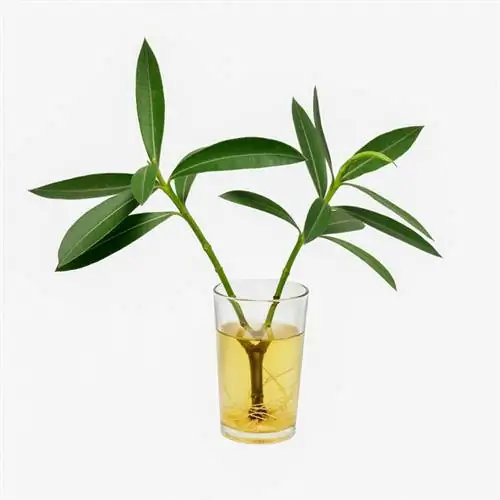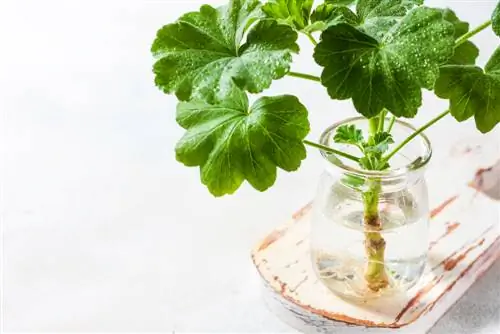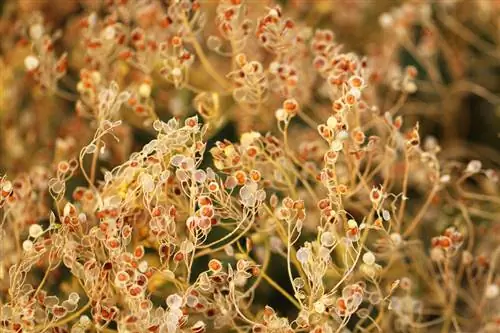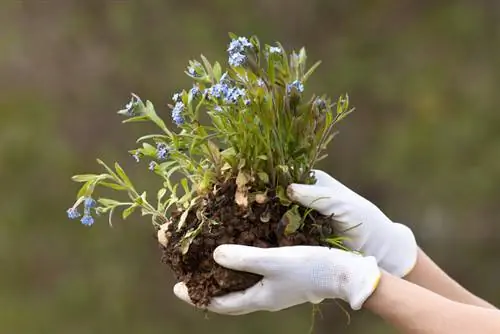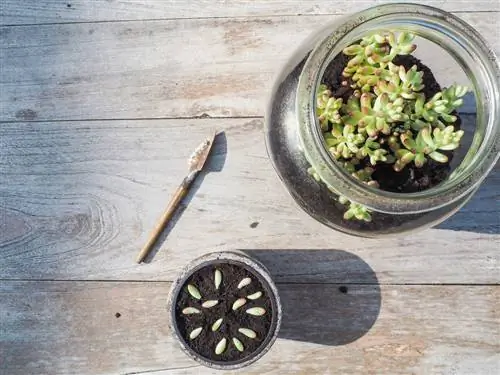- Author admin [email protected].
- Public 2023-12-16 16:46.
- Last modified 2025-01-23 11:20.
Oleander (Nerium oleander), a woody, evergreen plant, originally comes from the Mediterranean region and grows there preferably in moist floodplain regions. The shrub, which is up to three meters high, is often cultivated in this country because of its beautiful flowers - preferably in pots, as oleander - with the exception of a few varieties - is not winter hardy. The flowering shrub is quite easy to care for and is also easy to propagate.
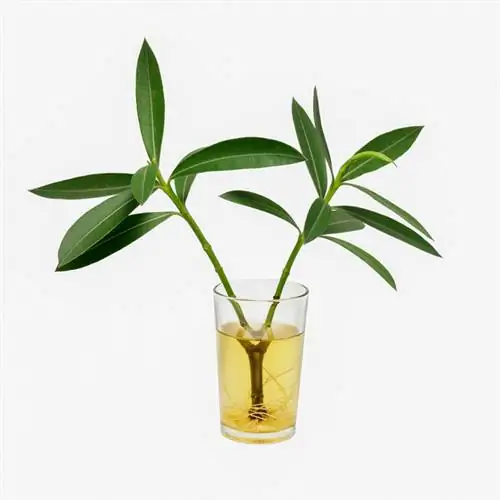
How to propagate oleander?
Oleander can be propagated by cuttings, dividing older plants or from seeds. Cuttings work best with young, unwoody shoots that root in water or soil. Older plants can be divided when repotting, and seed pods provide an opportunity for breeding.
Particularly easy: propagation via cuttings
It is particularly easy to propagate the oleander vegetatively by rooting the clippings that occur each year when pruning either in a glass of water or in lean soil. In principle, all shoots can be used as cuttings as long as they are at least 15 centimeters long. However, rooting works best with young, not yet woody branches. These should be cut between June and September.
- Cut off the shoots directly below a leaf node.
- From there the cutting forms roots and new shoots.
- Ideally the cuttings are between 15 and 25 centimeters long
- and still have soft, green wood.
- The cutting surface should be slightly slanted to make it easier for the cutting to absorb water.
- Use a sharp and clean knife for this.
- Scissors, on the other hand, are unsuitable as they will only squeeze the cables.
- Remove the bottom pairs of leaves, leaving only the top one.
- Place the cutting in a glass with fresh, lukewarm water.
- This should be changed daily.
- Place the jar in a bright and warm place,
- However, avoid direct sunlight.
- The first fine roots will form after about four weeks.
- If there are enough roots, the plant can be planted in a humus-rich substrate.
Instead of placing the cuttings in a glass of water, you can also place the cuttings in a lean growing substrate. However, keep the substrate evenly moist and ensure high humidity. You can achieve this by placing a disposable glass or a cut-off PET bottle over the cutting.
Works great with older plants: dividing oleanders
Oleander grows very bushy and usually has three or even more strong main shoots. Older oleanders can be easily divided the next time you repot them by cutting through the roots so that each new plant receives at least one of these main shoots. Then plant the individual pieces in new pots. Oleander should be divided as early as possible in the year, before the flowers form - it is best to carry out the procedure in April. Then the divided individual plants have enough opportunity to form new flowers and the flower rush will not be canceled this season.
Growing oleander from seeds
Older oleanders in particular form seed capsules if the dead shoots are not cut off. From these you can obtain the seeds you need for breeding, but the seedlings obtained from them will most likely look different than the mother plant - mutations and the emergence of unknown genetic material are not the exception with this type of propagation, but the rule. Since it doesn't get cold in winter in the oleander's homeland, you don't need to stratify the seeds. Instead, you can sow them immediately. However, the best time for sowing is late winter or early spring, i.e. H. in February or March. The seeds germinate best in an indoor greenhouse in a bright and warm location. However, don't lose patience if you still don't see any seedlings after several weeks: sometimes it takes a while.
- Use lean potting soil or coconut substrate (“cocohum”) for cultivation.
- Pour this into a shallow bowl with holes at the bottom,
- Excess irrigation water may drain away there.
- Let the seeds soak for at least six hours before sowing.
- Use lukewarm water.
- Cover the seeds very lightly with sifted soil,
- because oleander is a light germinator.
- Keep the substrate evenly moist.
- An atomizer is particularly suitable for this.
The young plants can be moved to a more nutrient-rich substrate as soon as they have developed at least one additional pair of leaves in addition to the two cotyledons. Make sure that the seedlings in the growing tray are not too close together, otherwise the fine roots can become tangled and you will not be able to transplant the young plants into individual planters without damage.
Tip
If you cut oleander cuttings, dead shoots or seed capsules, you should never do this without gloves! All parts of the flowering shrub are highly poisonous, which is particularly true for the milky sap. When it comes into contact with the skin, this can cause irritation (e.g. rashes), but - if the juice gets into open wounds and thus into the bloodstream - it can also cause symptoms of poisoning.

